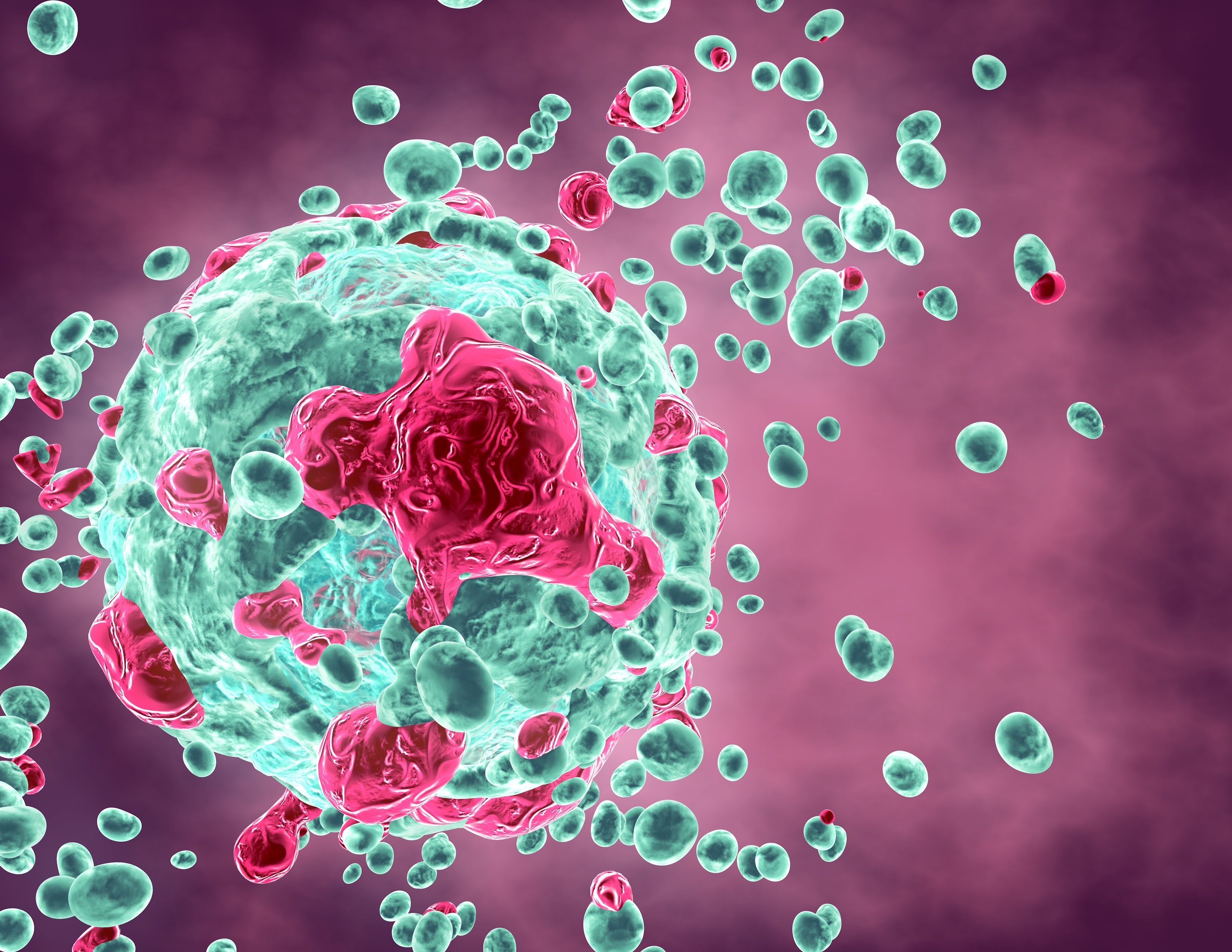Neoadjuvant Daromun Meets Primary End Point of RFS in Melanoma
A trial of intratumoral daromun and surgical resection for the treatment of patients with locally advanced, fully resectable melanoma, showed a clinically meaningful improvement compared with surgery alone.
Cancerous tissue destroying human cell: ©picture-waterfall - stock.adobe.com

The phase 3 PIVOTAL trial (NCT02938299) of neoadjuvant intratumoral daromun (Nidlegy) met its primary end point of recurrence-free survival (RFS) in patients with locally advanced, fully resectable melanoma.1
The trial compared neoadjuvant intratumoral daromun followed by surgery vs surgery alone. At a median follow-up of 27.6 months, there was a significant reduction of the hazard ratio (HR) of 33% (HR = 0.67) and 37% (HR = 0.63), respectively, favoring the treatment arm. This improvement was clinically meaningful and statistically significant, according to investigator assessment.
“The clinical data in melanoma and high-risk non-melanoma skin cancers bode well for the possible adoption of intralesional [daromun] in a series of dermato-oncology indications,” said Dario Neri, PhD, co-founder, chief executive officer, and chief scientific officer of Philogen, daromun’s manufacturer, in a press release.
Treatment-related adverse events (TRAEs) were consistent with the proposed mechanism of action of daromun and the favorable safety profile previously reported in the phase 2 study. Grade 3 TRAEs were observed in 24.8% of patients. Neither grade 4 toxicity nor treatment-related deaths were observed.
The randomized, open-label PIVOTAL trial had an enrollment of 257 patients in Europe across 22 clinical centers in Germany, Italy, France, and Poland.1 The secondary end points were local RFS, distant metastasis-free survival rate, overall survival, the percentage of patients who experienced TRAEs, the percentage of patients with hematological and chemistry abnormalities, clinically meaningful changes in vital signs and physical examinations, and changes in absolute counts and relative percentages of lymphocytic subpopulations.
Patients in the treatment arm were administered intratumoral injections into all injectable cutaneous, subcutaneous, and nodal tumors once weekly for up to 4 weeks or until all injectable tumors disappeared or intolerance to study treatment was observed. Surgical resection followed on week 5. Patients in the active comparator arm received surgical resection alone.
To be eligible for the trial, patients needed a diagnosis of malignant melanoma stage IIIB or IIIC, an ECOG status ≤ 1, and a life expectancy of at least 24 months. Patients’ bloodwork also needed to show absolute neutrophil count > 1.5 x 109/L, hemoglobin > 9.0 g/dL, platelets > 100 x 109/L, total bilirubin ≤ 30 µmol/L (or ≤ 2.0 mg/dl), ALT and AST ≤ 2.5 x the upper limit of normal (ULN), serum creatinine < 1.5 x ULN, serum creatinine < 1.5 x ULN, and LDH serum level ≤ 1.5 x ULN.
Patients were not eligible for the trial if there was evidence of distant metastasis, presence of active infections, heart insufficiency, uncontrolled hypertension, active autoimmune disease, or history of organ allograft or stem cell transplantation, among other conditions.2
The trial’s full results, including subgroup analyses, will be presented at a forthcoming medical meeting. Daromun is also being investigated in phase 2 trials for the treatment of patients with aggressive forms of basal cell carcinoma and cutaneous squamous cell carcinoma.1